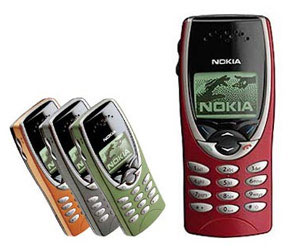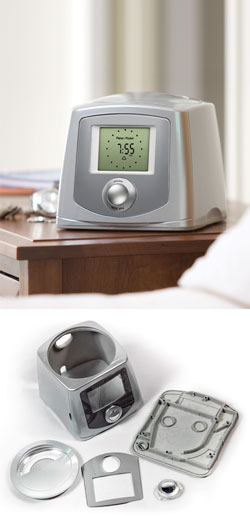In-mould decoration and labelling technologies provide options for all types of products. Applications and opportunities are numerous.
IMLIn-mould labelling (IML) has been used in packaging applications since the early 80’s, and New Zealand and Australia were relatively early adopters of the technology that was principally developed in Germany. Basic IML processes involve loading a printed plastic label into an injection moulding tool. The component, container or lid is then moulded behind and around the label. The bond formed between the label and the product is superior to adhesive and “printed on” graphics. Experienced designers are able to create a seamless blend between the label and the product that merge the branding and information with the product itself. This trend is expanding in the packaging and FMCG industries as injection moulding becomes a favoured manufacturing technology. Above: Helga margarine example designed at Bayly for Huhtamaki Australia – printed PP label, PP injection moulding IMDIn terms of the use of IML with amorphous engineering materials the history is much shorter, and it is really only the last 10 years where we have seen the technique relatively widely adopted for engineering polymers. More widely referred to as In Mould Decoration (IMD), it is commonly used in automotive components and in medical products and is an increasingly attractive alternative because of a number of key attributes it can bring to the design of a product. Benefits of IMD -
The earliest examples of IMD were readily found in the manufacture of the colourful mobile phone faces that were all the rage but a few short years ago. We all recall the plethora of customization options that the discerning consumer could choose from to make their phone stand out from the crowd.
No longer are these a fashion option in the days of protective add-ons for iphones and android phones. Their time has passed us by but the process lives on. The wide range of different printing, label substrate and plastic product options for this technology is huge and has virtually limitless application. In the IMD processes, the 3 key aspects are the
Sabic Plastics have been a leading supplier of IMD technology and materials and their website has extensive resources dealing with the design of parts, tool design, part trimming processes. You can check it out here. Please contact Mark Bayly, This email address is being protected from spambots. You need JavaScript enabled to view it. or another member of our team if you'd like to know more about IMD processes or would like to talk about IMD could enhance your current product or be rolled out with your new products. |
IMD In Action ...... Some very clever colleagues of ours at Talbot Technologies in New Zealand have combined their thermoforming and injection moulding business in order to provide a single point of contact for the manufacture of all types of products using IMD technology. One of their latest and best examples of their capability has been the 5 IMD components that they supply to Fisher and Paykel Healthcare used in the new ICON sleep apneoa flow generator.
The process plant purpose-designed for production of the parts includes 7-axis robots working in tandem; and collapsing core moulds both for thermoforming labels, and injection moulding IMD parts. Contact Steve Wilson at Talbot Technologies for more details, This email address is being protected from spambots. You need JavaScript enabled to view it., +64 21 329 889 |



